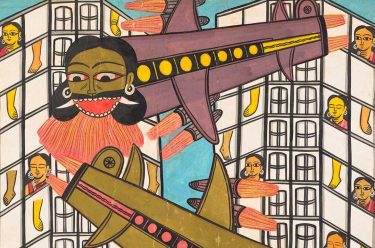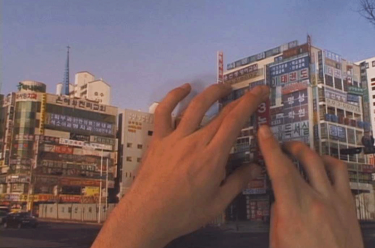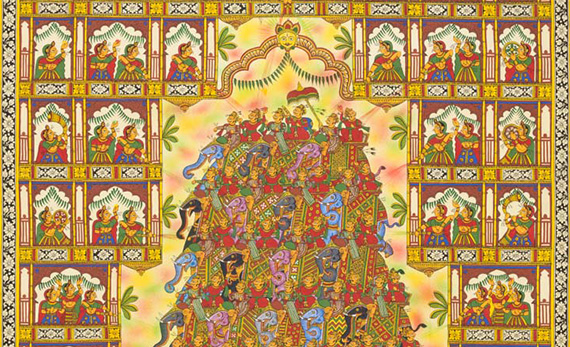
On Wednesday 23rd March – the eve of the Holi Festival, we invite visitors to the Queensland Art Gallery at 5pm to celebrate with a special free after-hours viewing and exhibition tour to enjoy the vibrancy and colour of the Indian works in the exhibition Kalpa Vriksha: Contemporary Indigenous and Vernacular Art of India which is now showing as part of ‘The 8th Asia Pacific Triennial of Contemporary Art’ (APT8).
Holi is one of the most widely celebrated festivals in India, and its public performance is one of the most vibrant and spectacular. Known as ‘the festival of colour’, the event involves swathes of people take to the streets throwing brightly coloured powders and liquids on each other, leaving everyone bathed in pigments in a playful and spirited street party.
Holi is celebrated on the Spring full moon as a harvest festival and while it is an important Hindu festival, it has become a secular event throughout much of the world.
A number of legends tell the origins of Holi and renditions of the festival can be found in murals and sculpted panels in temples dating back several centuries. One popular legend believed to be more than 2000 years old describes how Holi is derived from the name of the demoness Holika. The story tells of a powerful demon King who forbade anyone in the kingdom from worshipping any other figure. His son, Prahlad, however became devoted to Lord Vishnu, who would later save him from harm when the infuriated king made attempts on his son’s life. The king called on his evil sister, Holika, to trick Prahlad by taking him into a fire, knowing she had a special boon (blessing) that protected her. Holika took Prahlad in her lap into the fire while Prahlad chanted worship to Lord Vishnu. Holika’s boon was passed to Prahlad while Holika went up in flames. The legend is celebrated in some areas today when on the eve of Holi bonfires are lit and effigies of Holika are burnt.
The throwing of coloured powder relates to a legend involving Krishna and Radha, and in this context the celebration is seen as a festival of love. Krishna took great joy in playing with Radha by applying colour to her face. Some versions of the story claim that Krishna’s blue colour was a result of the Ogress Pootana who tried to kill him with poisoned milk when he was a child which left his skin a vivid colour. Krishnastarted flirtatiously throwing colours on the fair-skinned Radha and the other gopis (milkmaids) because he thought they wouldn’t play with him.
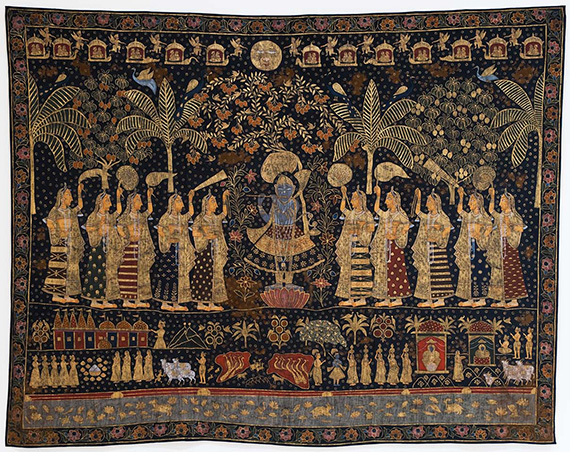
Celebration and community festivals are subjects that have inspired art from India for centuries and this is reflected in works from the Gallery’s Collection, including expressive examples in Kalpa Vriksha: Contemporary Indigenous and Vernacular Art of India now showing as part of APT8.
While some festivals are celebrated throughout India, others are local events commemorating harvest time, marriages or religious ceremonies, these festivals are a time to bring community together. On these occasions art plays a central role, as expressed in many of the works throughout Kalpa Vriksha.
For example, Kalyan Joshi from Rajasthan specifically shows a courtly celebration of Holi in his detailed scroll Holi festival (fagh) 2015. It illustrates the king and noblemen in a towering stack of royal elephants, with the women of the courts on the surrounding balconies spraying them with colour. Joshi is a Phad painter from a family of traditional artists who practice this form. Holi festival (fagh) employs a new and experimental style while maintaining the vibrant pigments and fine brushwork of traditional Phad painting. Traditionally these scrolls were unrolled after sunset and formed a visual backdrop to all-night performances accompanied by music, song and dance. Referred to as ‘reading phad’, the performances would follow the scroll from scene to scene, illuminating each component of the narrative with an oil lamp.

In one of the seven works on display by Rajesh Chaitya Vangad, the artist portrays a village celebration of Diwali, the festival of light, another important event on the Hindu calendar and observed throughout the world. He draws on the distinct iconography of Warli art, an indigenous tradition from the Thane district of Maharashtra with an artistic history dating back several millennia. Warli art was commonly associated with festivals and harvests, decorating the walls of the houses in villages, and the expansive figurative designs embody the communal joy and revered significance of these celebrations.
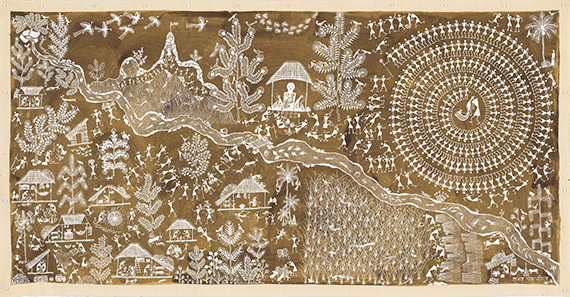
Similarly Mithila or Madhubani painting is an ancient tradition inherently linked to celebration, composed by women artists at times of marriage and drawing on motifs of love and union. While Pushpa Kumari captures this theme in her precise and disciplined Mithila works, she expands this long tradition with works that comment on contemporary social issues. She has also taught and collaborated with her brother-in-law in a large scale silk piece depicting modern day village life.


A central feature currently on display showcases the sculptural art of the Rajwar community from a remote area of Chhattisgarh. Similarly this originated from a tradition steeped in celebration in which doorways of homes would be decorated during harvest festivities. This unique art form was pioneered by the humble artist Sonabai, who came to Brisbane in 1999 to create works for APT3, and now her son and other members of the community who learnt from her have created a special collection of sculptures as part of APT8.

These jubilant works are joined by several other art-forms in Kalpa Vriksha: Contemporary Indigenous and Vernacular Art of India, bringing together exciting artists from across India. Showcasing a variety of works that show both inherited knowledge, spiritual belief and evolving techniques, they offer a glimpse into some of the rich and fascinating cultures, beliefs and celebrations of India.
APT8 Live
APT8 Live continues to animate QAG and GOMA for the duration of the exhibition, and visitors are invited to engage with the program through our monthly events exploring performance and the body in APT8. These incorporate artist performances, drop-in workshops, curators’ tours and a discussion forum in which performance art specialists, academics and artists consider the breadth of contemporary performance art from the Asia Pacific, and how it contends with the regions wide-ranging issues and contexts.
Sunday 20 March 2016
Closing Weekend: Saturday 9 and Sunday 10 April 2016
The Asia Pacific Triennial of Contemporary Art (APT)
is the Gallery’s flagship exhibition focused on the work of Asia, the Pacific and Australia.
21 November 2015 – 10 April 2016
Exhibition Founding Sponsor: Queensland Government
Exhibition Principal Sponsor: Audi Australia
